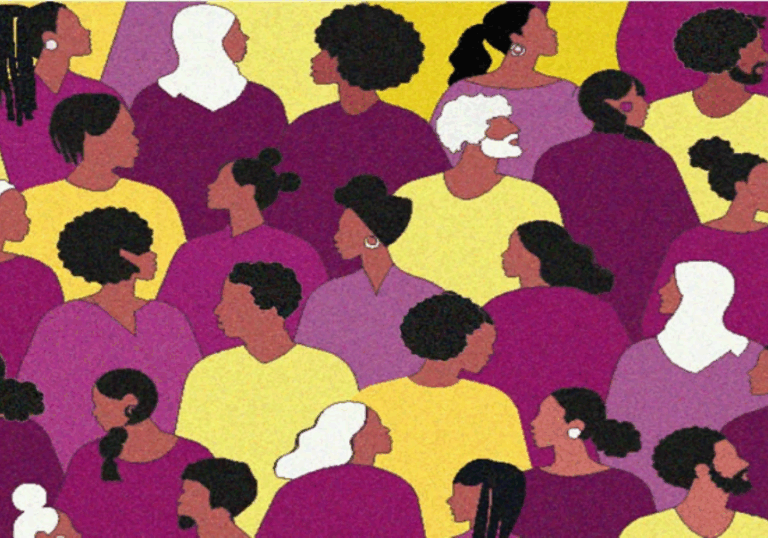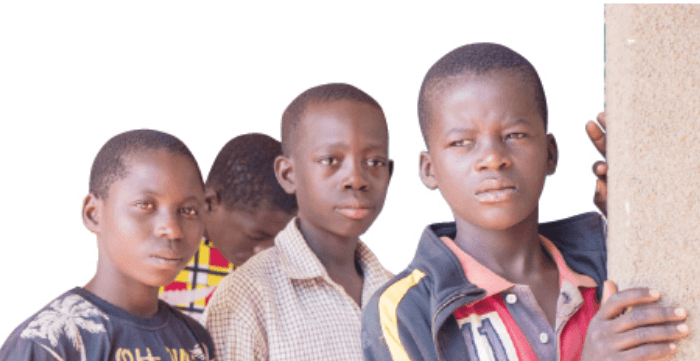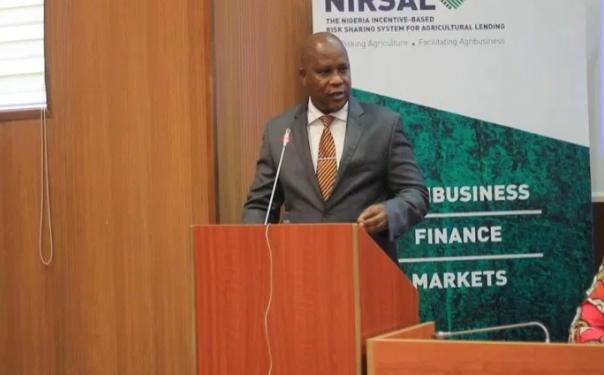Nigeria’s health minister, Osagie Ehinare, on April 23, said more than 40 health workers had tested positive for coronavirus. The figure represented roughly 4.6 per cent of the country’s then 873 confirmed cases.
The minister, who stated this during the daily press briefing by the Presidential Task Force on COVID-19, added that apart from the over 40 health workers, there are others “who have been quarantined in the last 2 weeks due to exposure and have not been able to contribute to efforts of the health sector.”
The statistics may have risen since the minister’s update. But the government has not given updates on the status of the quarantined health workers.
Findings by PREMIUM TIMES have also revealed that not less than three fatalities have been recorded among the health workers. This represents 8.6 per cent of the total number of 35 deaths so far recorded in Nigeria.
The statistics of the fatalities include the duo of Aliyu Yakubu, who died at the Nigeria Air Force Reference Hospital, Daura, Katsina State, and Emeka Chugbo, a popular obstetrics and gynaecology consultant, who died at the Lagos University Teaching Hospital (LUTH), Idi-Araba, after both were confirmed victims of the deadly virus.
Also, the medical director of San Dominique Hospital, Uyo, Akwa Ibom State, Dominic Essien, reportedly presented symptoms of the disease before he was confirmed dead. The result of his COVID-19 test is yet to be out for official confirmation.
In the same vein, the Borno State index case, who has since died, was a member of an international humanitarian organisation- Médecins Sans Frontières (MSF), otherwise known as Doctors Without Borders.
The deceased, who was identified as Babangida Buba, was a nurse with the organisation. He died at the University of Maiduguri Teaching Hospital, where seven of the health workers who attended to him have also been confirmed positive of the virus.

‘Highly conservative’
But concerned health workers’ unions have described the government’s statistics as “highly conservative,” suggesting that more cases among them have been confirmed, and that many more are currently under observation.
They also claimed that there are conflicting figures of deaths recorded among the health workers, and that the situation has impacted badly on the morale of their members.
The leaderships of the various health workers unions, including the Nigerian Medical Association (NMA), National Association of Resident Doctors (NARD), Joint Health Workers Union (JOHESU) and the National Association of Nigerian Nurses and Midwives (NANNM) have expressed fear that more of their members are still very prone to contracting the virus.
They blamed the development on poor logistics and lack of protective tools across various public and private hospitals.
Why Nigerian health workers are at higher risk
Investigations by PREMIUM TIMES have revealed that most of the casualties recorded among the health workers were not those working at the isolation or testing centres, otherwise regarded as the frontlines, but at various hospitals where workers are forced to use improvised personal protective equipment (PPEs), due to their unavailability.
Lagos State, which accounts for 844 of Nigeria’s 1,532, that is, 55 per cent of confirmed cases, as of Wednesday morning, has not done well in its treatment of the health care workers who operate outside the isolation centres.
For instance, three nurses and a doctor from Alimosho general hospital, Igando, who are currently receiving treatment at the infectious disease hospital (IDH), Yaba, and Onikan isolation centre, contracted the virus through a patient who visited their hospital.
This newspaper can also confirm that many health workers from the general hospitals in Odan, Lagos Island, Ikorodu, and Lagos State University Teaching Hospital (LASUTH), Ikeja, and LUTH are already quarantined, and are awaiting the results of their tests.
The health workers experienced exposure to confirmed COVID-19 cases, who failed to either reveal their underlying health status or their travel history.
There are many others from private hospitals across the federation, who have also either been quarantined or receiving treatment at isolation centres.
Findings have shown that governments at both federal and state levels have concentrated surveillance and management efforts against the disease at only the isolation and testing centres, leaving other healthcare facilities and their workforce out of their calculations.
Across these healthcare facilities- primary, secondary and tertiary, personal protective equipment (PPE) such as masks, infrared thermometers, coverall, hand sanitisers, and gloves are scarce commodities, and are rationed among staff.
The scarcity of PPE has forced health workers in some public hospitals visited by our reporter recently to use improvised protective tools, especially sanitisers.
“We combine making sanitisers with the volume of work we face in the wards,” said the NANNM chairman at Lagos Island maternity, Amusan Ayobami. At the general hospitals located in Ifako Ijaiye, Orile Agege, and Gbagada, our reporter found out that only critical health workers, such as nurses and doctors, are entitled to 100 millimetres of sanitisers each, and for a period of two weeks.
The state government had confirmed the development to our reporter, blaming it on greedy marketers who were alleged to be “making brisk business from the unfortunate situation by hoarding and inflating prices.”
The permanent secretary at the Lagos State Ministry of Health, Olusegun Ogboye, told PREMIUM TIMES all efforts are being made to address the logistic challenge.
Mr Ogboye’s counterpart at the Lagos State Health Service Commission (LSHSC), Benjamin Eniayewun, said the governor has consistently expressed his commitment to improve on the working conditions across all the health facilities.
Mr Eniayewun said, “The governor specifically told us at a meeting recently that he would rather waste money than risk the lives of health workers.”
However, further findings have shown that many weeks after Mr Eniayewun’s pledge, nothing significant has changed.
In Kwara, nurses staged a protest to express their dissatisfaction with the unavailability of PPE in the state. They accused the government of subjecting them to hardship especially without proper welfare packages including transportation to and from work in spite of the lockdown.
The story is the same in Plateau State, where a similar protest was held by health workers over poor working conditions.
Angry unions
The various health workers’ unions have accused the government of focusing attention on “frontline workers” and that those saddled with the responsibility of manning the various public health facilities are ignored.
Strangely, PREMIUM TIMES recently reported how those on the frontline also have a bouquet of complaints.
Speaking on the situation, the president of the resident doctors’ union, Roland Aigbovo, alleged that the government’s segregation of health workers, especially in the distribution of PPEs and welfare packages, has stirred the crisis.
He said; “There is discrimination among health workers who are exposed to COVID-19 at the isolation centres and those who inadvertently treat positive cases at various hospitals.”
Also speaking, NANNM national president, Adeniji AbdulRafiu, said members of his association which takes the larger percentage of health workforce, have been subjected to grave hardship in their efforts to provide care.
“There is lockdown in many of the states, and there are hardly any arrangements for health workers to get to work. The rosters have been altered due to the number of nurses already drafted to Isolation centres, yet there is no encouragement, whatsoever,” Mr Adeniji said.
Consequences
PREMIUM TIMES’ findings have revealed that the increasing figure of casualties among the health workers may have dire consequences.

Apart from panic referrals and rejection of patients across major public hospitals, the existing poor ratio of available health workers to the national population may further plunge steeply.
Shortly before the lockdown was declared, an official of the West African Examinations Council (WAEC), identified simply as Kola, was one of tens of in-patients who were ejected out of National Orthopaedic Hospital, Igbobi, Lagos.
“I was on admission at the hospital and was billed to undergo surgery the same week we were asked to leave. Since then I have been going through pain at home,” Mr Kola said.
In a similar development, on April 5, a Tuberculosis patient, who asked not to be named, was rejected by the Lagos State University Teaching Hospital (LASUTH), Ikeja. It was the third public hospital in Lagos where he was rejected on that day.
The patient was finally taken to Ladoke Akintola University Teaching Hospital (LAUTECH), Osogbo, where he was admitted only after interventions from influential people in the state.
If the duo of Messrs Kola and Azeez are lucky to be alive, it is not so for Riliwan Salami, who died on April 7, following his rejection at two hospitals.
Declining staff strength
While attention seems to have been shifted completely to the fight against the coronavirus disease, the World Health Organisation (WHO) has hinted that the number of deaths caused by malaria in sub-Saharan Africa could double to 769,000, in 2020.
According to the global body, Nigeria accounted for 25 per cent of malaria fatalities across the world in 2018. It then urged the government to heighten the response rate towards reversing the trend. However, the fight against the new pandemic may have truncated whatever plan that might have been put in place.
This is even as patients of other health challenges are now being rejected across major hospitals, especially in Lagos. The excuses offered to patients by the public hospitals are either poor staff strength or fear of contracting the dangerous virus by the health officials.
PREMIUM TIMES had in 2019 exclusively reported that only one medical doctor is available to cater for every 4,845 Nigerians.
The report, which was based on the official data made available to this newspaper by the Medical and Dental Council of Nigeria (MDCN), showed that as of December 2017, Nigeria had 42,845 registered doctors, dentists and alternative medicine practitioners working in the country. Of these numbers, 39,912 are medical doctors.
The figure was compared to the country’s 2016 estimated population of 193.4 million by the Nigerian Bureau of Statistics.
By interpretation, Nigeria’s ratio of doctors to population is about eight times below the WHO’s recommendation of one doctor to 600 patients.
However, the report added that the data provided did not include the huge number of health workers who have relocated abroad in search of greener pasture since 2017, as Nigeria has, in the last couple of years, witnessed mass exodus of healthcare workers abroad.
Speaking on the number of available pharmacists in the country, the Registrar of the Pharmacists Council of Nigeria, Mohammed Elijah, had reportedly told Vanguard Newspapers that though the WHO’s recommendation specified one pharmacist per 2000 population, “in Nigeria we have approximately one pharmacist per 12,000 population.”
Nurses constitute the larger percentage of the healthcare workforce globally. The situation is not different in Nigeria. However, according to the immediate past health minister, Isaac Adewole, Nigerian hospitals are gravely short-staffed by the available nurses.
In his presentation as a guest at the 2017 annual nurses’ week in Abuja, Mr Adewole said Nigeria had 240,000 nurses and midwives to her population
He said then that if something urgent was not done, by 2030 the country would need additional 471,353 nurses and midwives, “because by expectations, only 333,494 nurses and midwives will be available by 2030.”
While there is no one size fits all as recommendation in terms of nurses per population ratio, the standard recommendation varies based on units, especially critical care units such as intensive care units, where the ratio is suggested to be 1:1 for the sickest patients or 1:2 or 1:3 for patients who are acutely ill but stable.
On general care units, the nurse to patient ratio is set higher, for example, 1:5 or 1:8 depending on the type of unit and the needs of the patient(s).
However, based on the statistics, the national president of NANNM said a single Nigerian nurse averagely takes care of more than 40 patients per shift, while one nurse is available to more than 100 Nigerians.
Meanwhile, rather than assuaging the tensed workers, efforts by the government seem to be aggravating the challenges.
On Friday, the chairman of the Presidential Task Force on COVID-19, Boss Mustapha, announced a life insurance package for a total of 5,000 health workers. Questions have continued to trail the development with concerned officials asking the process to be used in choosing the beneficiaries.
In a similar development, the Lagos State government announced an increase of hazard allowance to the state’s health workers from N5,000 to N20,000 only for the month of April.
While some of the health workers who spoke with our reporter condemned the alleged restriction of payment to April alone, they also alleged that instead of N20,000 promised, only N13,000 was paid to them.
However, PREMIUM TIMES learnt that two days after the workers took their complaints to the social media, the balance of N7,000 was paid.



